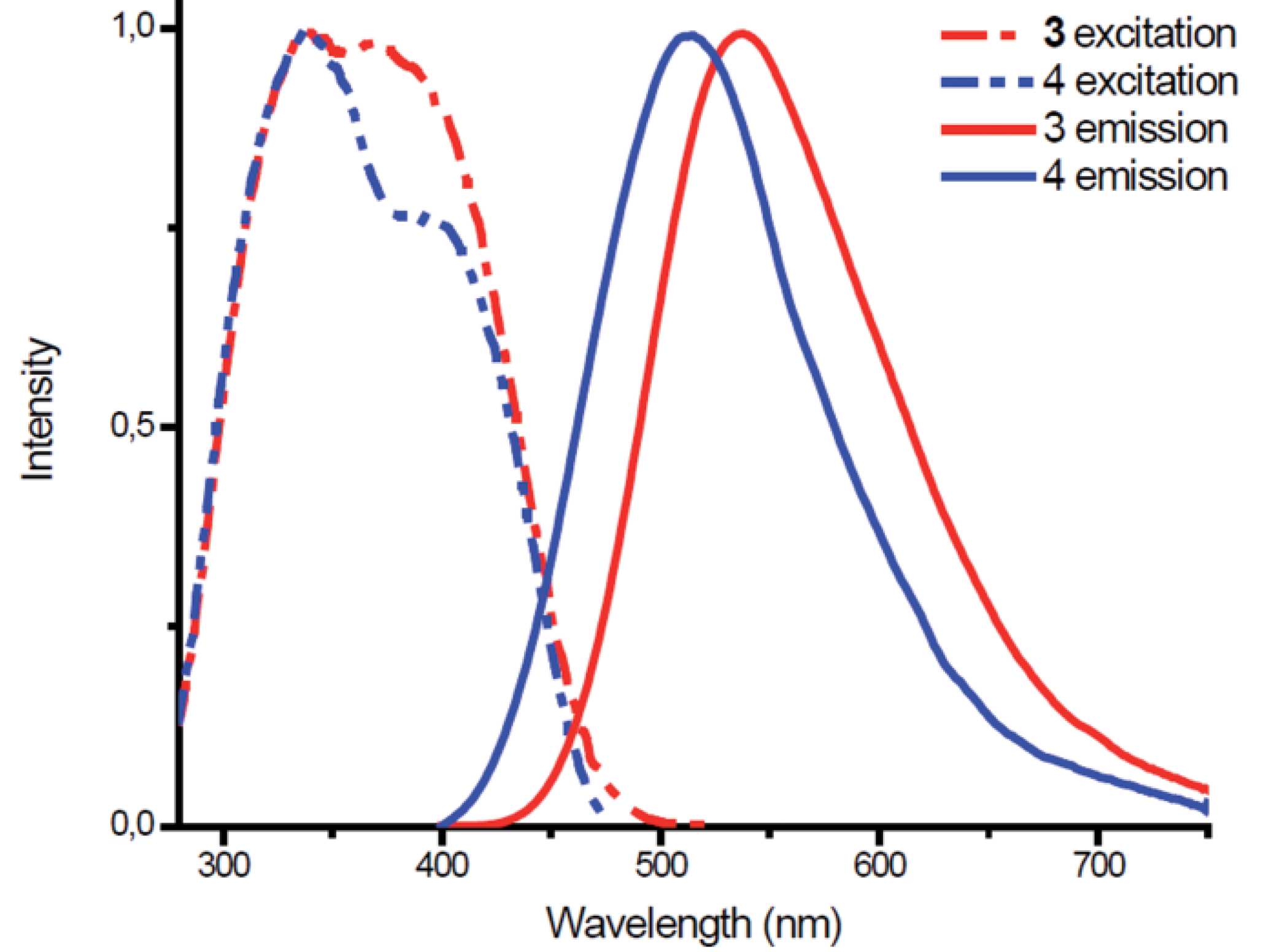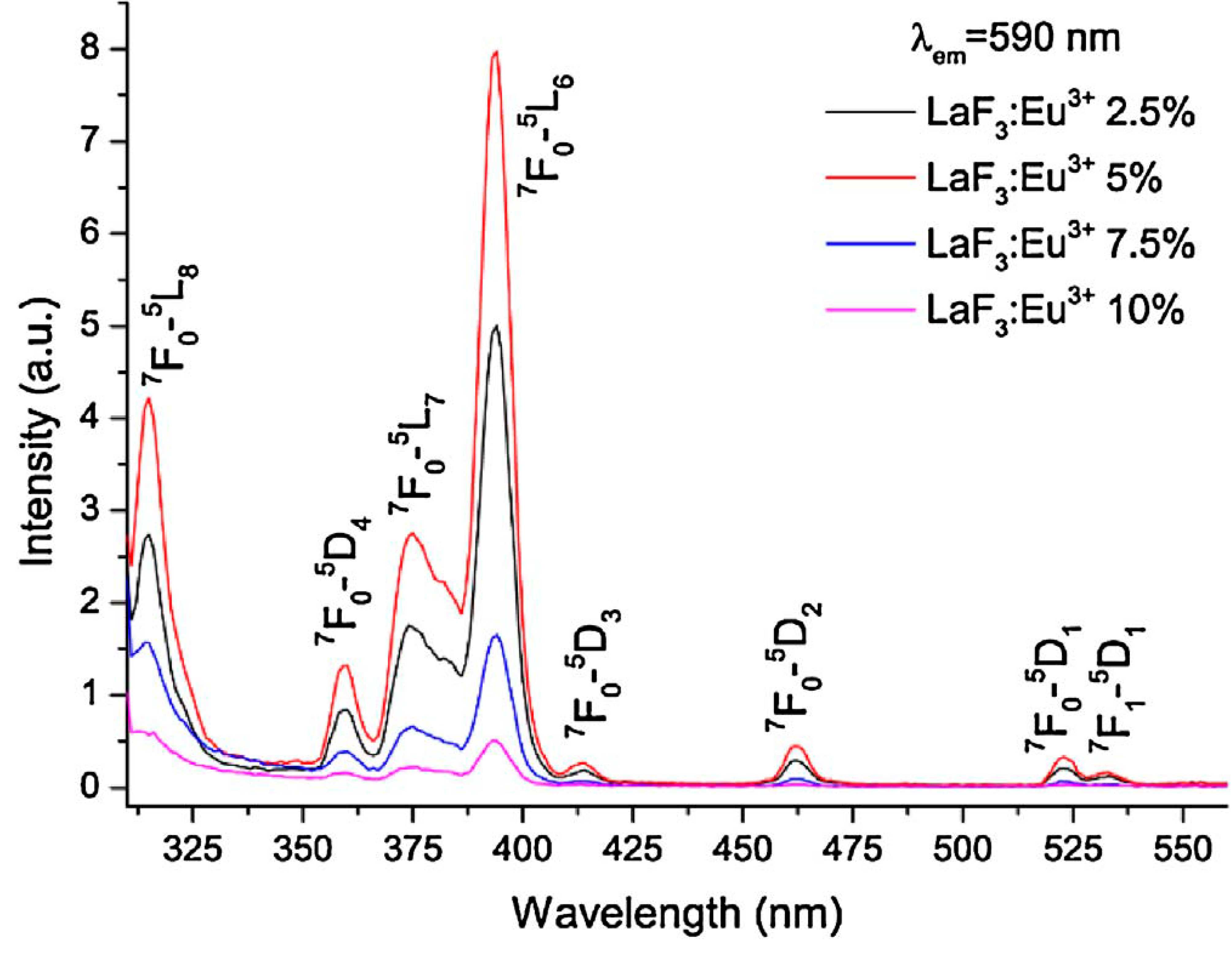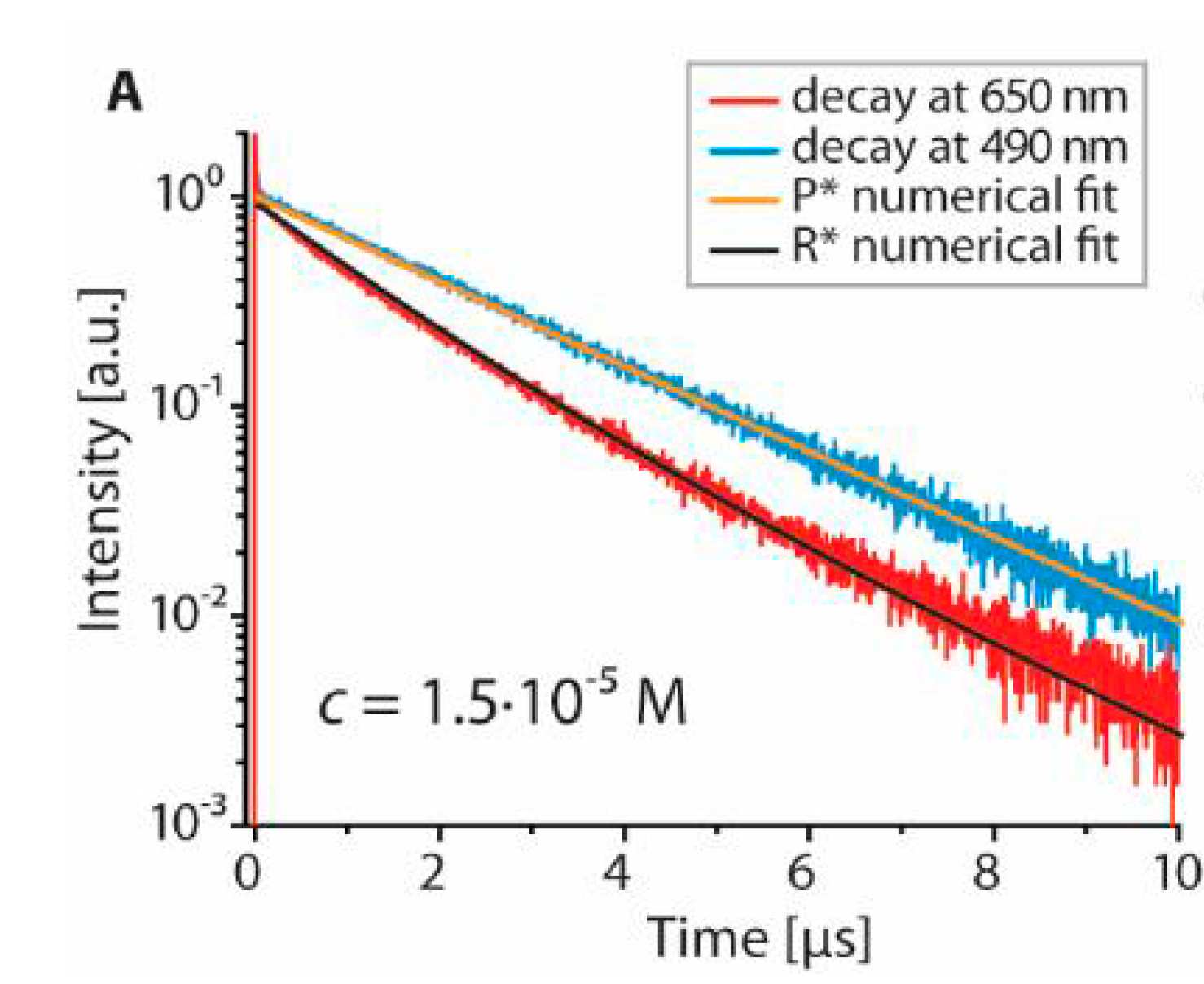Zeitschrift für anorganische und allgemeine Chemie Volume 643, Issue 14 August 2017 Pages 895–902
Igor D. Strelnik, Elvira I. Musina, Svetlana N. Ignatieva, Anna S. Balueva, Tatiana P. Gerasimova, Sergey A. Katsyuba, Dmitry B. Krivolapov, Alexey B. Dobrynin, Christoph Bannwarth, Stefan Grimme, Ilya E. Kolesnikov, Andrey A. Karasik, and Oleg G. Sinyashin
Pyridyl Containing 1,5-Diaza-3,7-diphosphacyclooctanes as Bridging Ligands for Dinuclear Copper(I) Complexes
Zeitschrift für anorganische und allgemeine Chemie Volume 643, Issue 14 August 2017 Pages 895–902
DOI: 10.1002/zaac.201700049

1,5-bis(R)-3,7-bis[2-(pyridine-2’_-yl)ethyl)-1,5-diaza-3,7-diphosphacyclooctanes 1 and 2 and their copper(I) complexes 3 and 4 were developed. The butterfly-shaped copper-iodide core and unusual P,N-chelate and P,P-bridged coordination mode of the heterocyclic ligand in the dinuclear complexes 3 and 4 were revealed. Complexes 3 and 4 display emission in green range of spectra, with lifetimes in a microsecond domain and quantum yields of luminescence in solid-state up to 38%. Thermochromic effects found for the phosphorescence of 4 in solutions are ascribed to rigidochromism.
Journal of Fluorine Chemistry Volume 200, August 2017, Pages 18-23
Larisa B. Gulina, Valeri P. Tolstoy, Igor A. Kasatkin, Ilya E. Kolesnikov, Denis V. Danilov
Formation of oriented LaF3 and LaF3:Eu3+ nanocrystals at the gas − solution interface
Journal of Fluorine Chemistry Volume 200, August 2017, Pages 18-23
DOI: 10.1016/j.jfluchem.2017.05.006

The LaF3 film formed by c-axis oriented uniform-size nanocrystals with diameter of about 400 nm was obtained on the surface of La(NO3)3 solution in 1 M HNO3 by interfacial reaction with HF in the gas medium. The effect of solution acidity on the layer morphology is reported. The film formed by LaF3:Eu3+ oriented nanocrystals with radial compositional gradient has been prepared in a similar way. The synthesized crystals were characterized by SEM, TEM, HRTEM, EPMA, TEM-EDX mapping, XRD analysis, Raman and luminescent spectroscopy. The LaF3:Eu3+ doped nanocrystals can potentially be used as luminescent material.
Chemistry - A European Journal Volume 23, Issue 47, Pages 11301–11311
Kristina S. Kisel, Alexei S. Melnikov, Elena V. Grachova, Pipsa Hirva, Sergey P. Tunik, IgorO. Koshevoy
Linking Re(I) and Pt(II) chromophores with aminopyridines: a simple route to achieve a complicated photophysical behavior
Chemistry - A European Journal Volume 23, Issue 47, Pages 11301–11311
DOI: 10.1002/chem.201701539

The bifunctional aminopyridine ligands H2N–(CH2)n–4–C5H4N (n = 0, L1; 1, L2; 2, L3) have been utilized for the preparation of rhenium complexes [Re(phen)(CO)3(L1–L3)]+ (1–3). 2 and 3 with NH2-coordinated L2/L3 were coupled with cycloplatinated motifs {Pt(ppy)Cl} and {Pt(dpyb)}+ to give the bimetallic species [Re(phen)(CO)3(μ-L2/L3)Pt(ppy)Cl]+ (4, 6) and [Re(phen)(CO)3(μ-L2/L3)Pt(dpyb)]2+ (5, 7). In solution, complexes 4 and 6 show 3MLCT{Re}-based emission at 298 K, which changes the parentage to 3IL(ppy) state at 77 K. The photophysical properties of compounds 5 and 7 display a pronounced concentration dependence presumably due to the formation of bimolecular aggregates. Analysis of the spectroscopic data, combined with TD-DFT simulations, suggest that the unconventional heteroleptic {Re(phen)}…{Pt(dpyb)} π-π stacking operates as a driving force for the ground state association. The latter, together with intra- and intermolecular energy transfer processes, determines the appearance of multiple emission bands and results in nonlinear relaxation kinetics of the excited states.
Glass Physics and Chemistry Volume 43, August 2017, Issue 4, Pages 298–301
A. A. Razumtsev, Yu. S. Tver’yanovich, Fahd S. Khan, I. E. Kolesnikov, A. V. Kurochkin
Spectral properties of glass (15Ga2S3 · 85GeS2) doped with erbium
Glass Physics and Chemistry Volume 43, August 2017, Issue 4, Pages 298–301
DOI: 10.1134/S1087659617040137

For chalcogenide glasses in the system (1 – x)[0.15Ga2S3 · 0.85GeS2]·xEr2S3, the absorption and luminescence spectra are investigated and the X-ray diffraction analysis is performed. A small shift in the position of the erbium absorption band with the increase of its content in the glass indicates the decrease of the effective charge on it, while the negligible changes in the angle position of the first sharp diffraction peak points to the constancy of the glass’s intermediate-order parameter. The possibility of describing the dependence of the intensity of erbium luminescence on its concentration using the earlier suggested equation has been discussed.
Journal of Luminescence Volume 187, July 2017, Pages 26-32
I.E. Kolesnikov, D.V.Mamonova, E.Lähderanta , A.V.Kurochkin, M.D.Mikhailov
The impact of doping concentration on structure and photoluminescence of Lu2O3:Eu3+ nanocrystals
Journal of Luminescence Volume 187, July 2017, Pages 26-32
DOI: 10.1016/j.jlumin.2017.03.006

Cubic Eu3+-doped Lu2O3 nanocrystals were synthesized via combined Pechini foaming method. Doping concentration effect on the structural and luminescence properties was studied. It was found that the increase of Eu3+ concentration leads to the growth of unit cell parameters and red shift of Raman lines. The optimal doping concentration and shape of emission lines were studied upon different excitation mechanism. Radiative and nonradiative transition rates and Judd-Ofelt parameters were calculated using the model of 4f–4f intensity theory. The type of multipolar interaction resulting in luminescence concentration quenching was determined.

